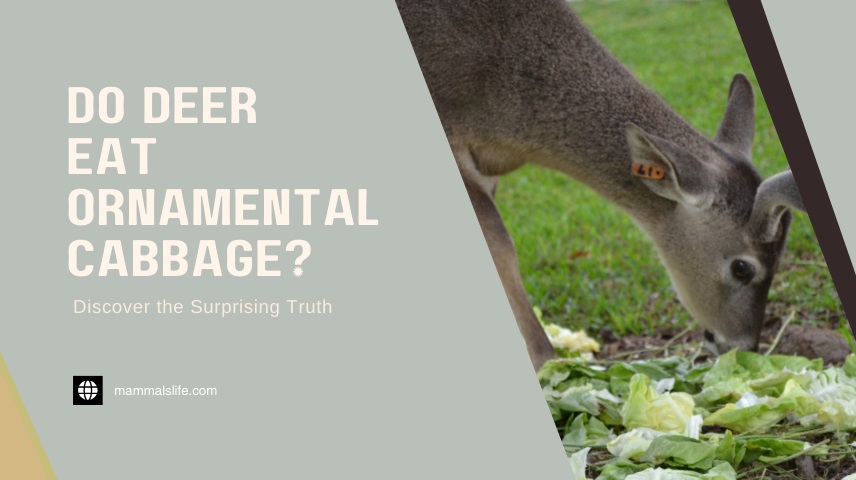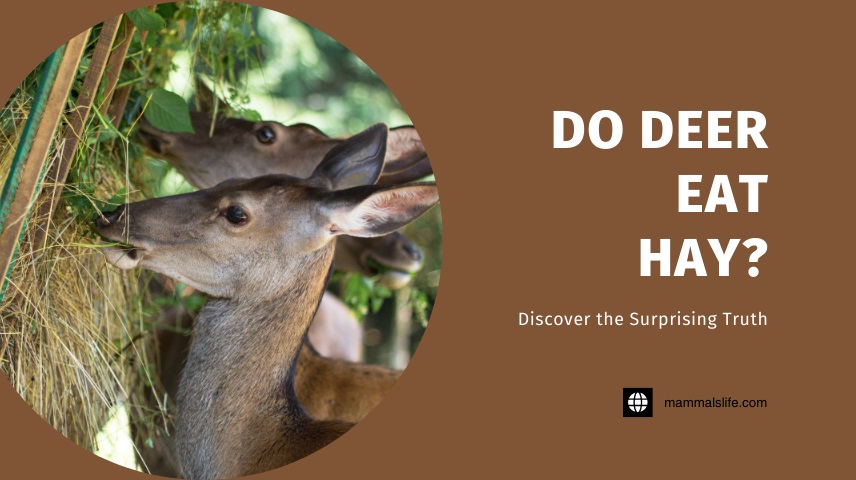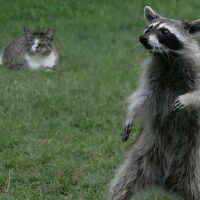Last Updated on February 22, 2025 by Mammals Life
Yes, deer eat ornamental cabbage. These plants are a favorite snack for deer, especially in colder months.
Ornamental cabbage, with its vibrant colors and unique textures, adds beauty to gardens. Unfortunately, its allure doesn’t stop at humans. Deer find these plants particularly tasty, posing a challenge for gardeners. Protecting ornamental cabbage from deer requires strategic planning. Simple measures like fencing, repellents, and careful placement help deter these hungry visitors.
Understanding deer behavior and their dietary preferences aids in safeguarding your garden. Proper care and vigilance ensure your ornamental cabbage remains a stunning focal point without becoming a deer buffet. Effective garden management keeps your plants safe and thriving throughout the seasons.
Deer’s Diet And Preferences
Deer are known for their adaptable eating habits. They consume a variety of plants. Understanding their diet helps in managing gardens and landscapes. Knowing what deer prefer can prevent unwanted damage.
Common Food Sources
Deer have a diverse diet. Below are some common food sources:
- Grasses
- Shrubs
- Leaves
- Fruits
- Tree bark
Ornamental plants are often at risk. These include ornamental cabbage. Deer may find these plants tasty.
Seasonal Variations
Deer’s diet changes with the seasons. During spring and summer, they eat fresh greens. This includes leaves and grasses.
In fall, they shift to acorns and fruits. Winter makes food scarce. They then consume tree bark and woody plants.
| Season | Preferred Food |
|---|---|
| Spring | Fresh greens |
| Summer | Leaves and grasses |
| Fall | Acorns and fruits |
| Winter | Tree bark and woody plants |
Ornamental cabbage is at risk, especially in winter. Deer may eat it when other food is scarce.
Read More – Do Deer Eat Ornamental Grasses? Protecting Garden, Alternative Plants
Ornamental Cabbage Overview
Ornamental cabbage is a colorful plant. It brightens gardens in fall and winter. This plant is not for eating. It is mainly for its beauty. Deer often finds it tasty, though. Let’s explore more about ornamental cabbage.
Types And Varieties
There are many types of ornamental cabbage. Some popular ones include:
- Nagoya Series: This type has frilly, colorful leaves.
- Osaka Series: Known for its smooth, large leaves.
- Pigeon Series: Smaller and compact, perfect for pots.
Each type comes in colors like pink, white, and purple.
Growing Conditions
Ornamental cabbage grows best in cool weather. It loves full sun but can take some shade. The soil should be well-drained and rich in nutrients. Here are some ideal growing conditions:
| Condition | Requirement |
|---|---|
| Sunlight | 6-8 hours of full sun |
| Soil | Well-drained, fertile soil |
| Water | Keep soil moist but not soggy |
| Temperature | 50-75°F (10-24°C) |
Regular watering helps the plant stay healthy. Avoid waterlogging to prevent root rot. With the right care, ornamental cabbage will thrive and beautify your garden.
Read More – Do Deer Eat Tomatoes? Signs, Preventing, Deer-resistant Plants
Deer And Ornamental Cabbage
Deer often roam gardens in search of food. One common question is: Do deer eat ornamental cabbage? Let’s explore this topic further.
Attraction Factors
Deer are attracted to certain plants. Ornamental cabbage can be one of them. Its bright colors and large leaves draw attention. Deer enjoy plants with high moisture content. Ornamental cabbage fits this preference.
Nutritional Value
Ornamental cabbage offers nutritional value for deer. It provides hydration and some nutrients. While not their first choice, they will eat it. Here is a quick look at its benefits:
| Component | Benefit for Deer |
|---|---|
| Water Content | Keeps deer hydrated |
| Vitamins | Supports overall health |
| Fiber | Aids in digestion |
Deer may munch on ornamental cabbage for these reasons. Gardeners should protect their plants if deer are a concern.
- Use deer repellents.
- Install fencing.
- Choose deer-resistant plants.
Understanding deer behavior helps protect your garden. Ornamental cabbage is beautiful but may attract deer.
Protecting Your Garden
Deer can be a real nuisance for gardeners. They have a particular taste for ornamental cabbage. Keeping your garden safe from these hungry visitors requires planning and effort. This section will explore effective ways to protect your garden from deer. We’ll discuss fencing solutions and natural repellents that can help.
Fencing Solutions
Building a fence is one of the best ways to keep deer out. There are several types of fences you can use:
- Electric Fences: These provide a mild shock to deter deer.
- High Fences: Deer can jump high, so your fence should be at least 8 feet tall.
- Mesh Fences: These are effective and less visible, blending with the environment.
A table showing various fencing options can be helpful:
| Type of Fence | Height | Cost | Effectiveness |
|---|---|---|---|
| Electric Fence | 4-6 feet | Moderate | High |
| High Fence | 8 feet | High | Very High |
| Mesh Fence | 7-8 feet | Moderate | High |
Natural Repellents
If fencing is not an option, natural repellents can be useful. Here are some effective choices:
- Soap Bars: Hang soap bars around your garden. The scent deters deer.
- Human Hair: Scatter human hair around plants. Deer dislike the smell.
- Garlic Spray: Mix garlic with water and spray on plants. The strong odor keeps deer away.
- Egg Mixture: Blend eggs with water and spray them. Deer avoid the smell.
Using these methods can help protect your ornamental cabbage and other plants.
Read More – Do Deer Eat Tree Bark? Impact On Trees, Preventing Bark Damage
Alternatives To Ornamental Cabbage
Deer loves to nibble on ornamental cabbage. But, you can protect your garden. By choosing deer-resistant plants, you keep your garden safe.
Deer-resistant Plants
Some plants do not attract deer. These plants are a good choice for your garden. Here are some top picks:
- Lavender: Deer hate the strong smell.
- Marigolds: These flowers keep deer away.
- Yarrow: Deer find this plant unappetizing.
- Foxglove: The leaves are toxic to deer.
- Bee Balm: The scent deters deer.
Planting these can save your garden from deer. They add beauty and color, too.
Companion Planting
Companion planting can help keep deer away. Some plants protect others from being eaten. Here is a table with some useful combinations:
| Protective Plant | Plant to Protect |
|---|---|
| Rosemary | Ornamental Cabbage |
| Chives | Ornamental Cabbage |
| Sage | Ornamental Cabbage |
Using these combinations, you can protect your ornamental cabbage. They work well together in the garden.
Frequently Asked Questions
Do Deer Eat Ornamental Cabbage?
Yes, deer often eat ornamental cabbage, especially when other food sources are scarce.
How To Keep Deer Away From Cabbage?
Use deer repellents, fencing, or plant deer-resistant plants nearby to protect your ornamental cabbage.
Are Ornamental Cabbages Deer-resistant?
No, ornamental cabbages are not deer-resistant and are often targeted by deer for their tender leaves.
What Attracts Deer To Ornamental Cabbage?
Deer are attracted to the tender, colorful leaves of ornamental cabbage, especially during fall and winter.
Can Deer Damage Ornamental Cabbage?
Yes, deer can significantly damage ornamental cabbage by eating the leaves and sometimes uprooting the plants.
What Plants Deter Deer From Gardens?
Plants like lavender, marigolds, and rosemary can help deter deer from your garden and protect ornamental cabbage.
Conclusion
Deer do eat ornamental cabbage, making it a risky choice for gardens. Protect your plants with deer-resistant strategies. Consider alternatives like marigolds or lavender. Understanding deer behavior helps maintain a beautiful, untouched garden. Keep your outdoor spaces thriving and deer-free by choosing wisely.











